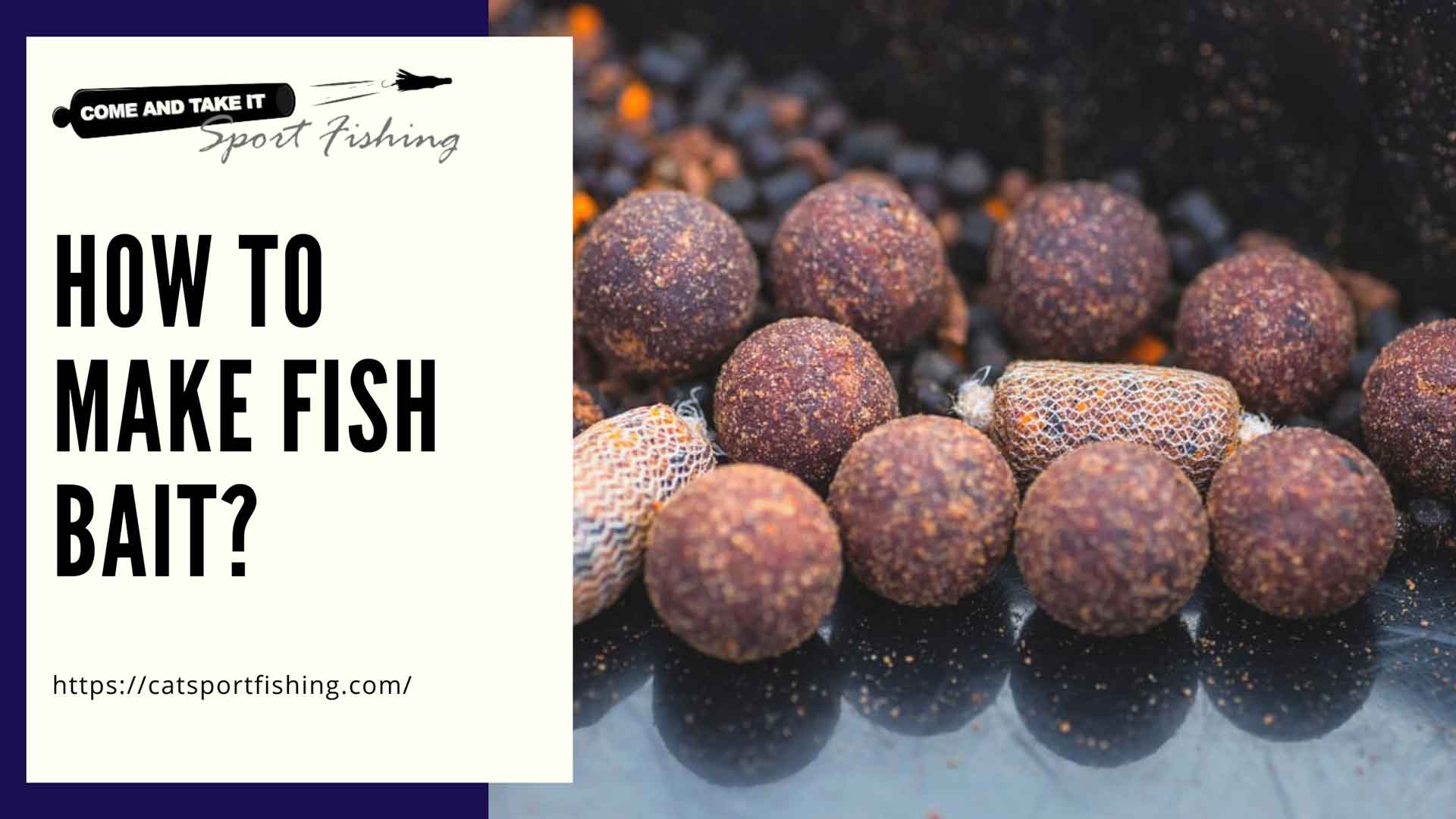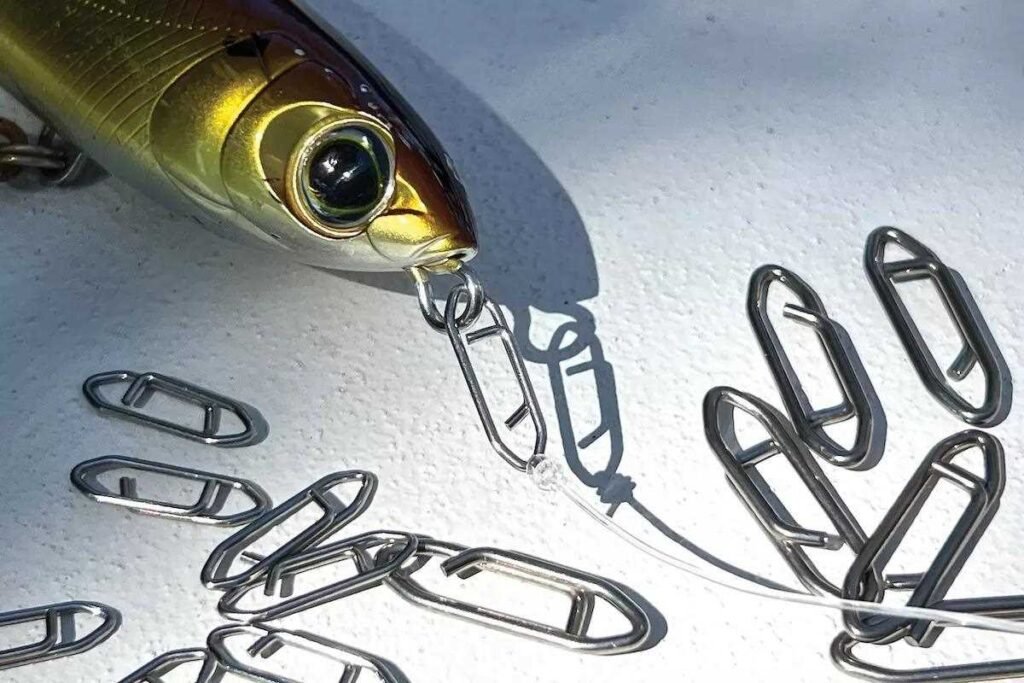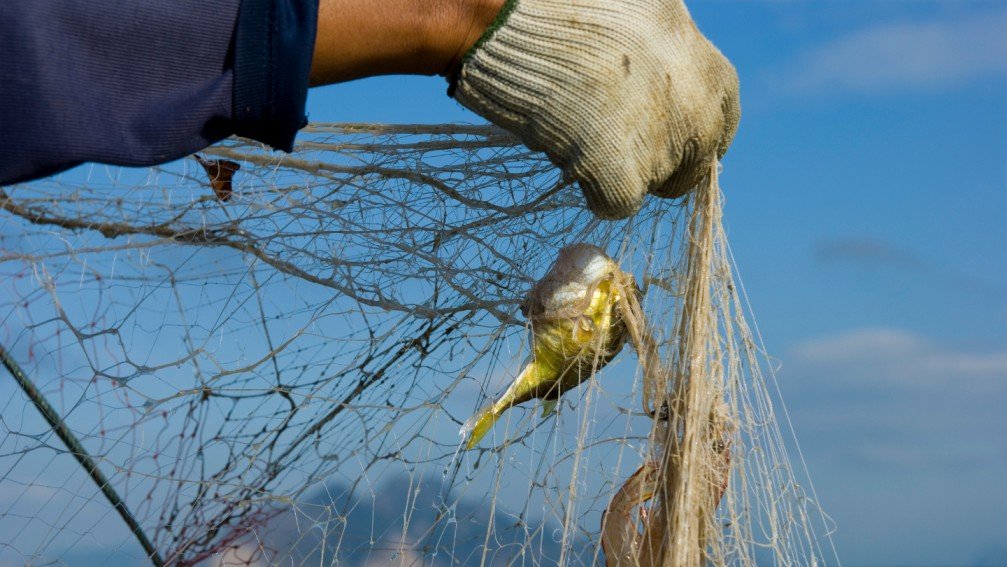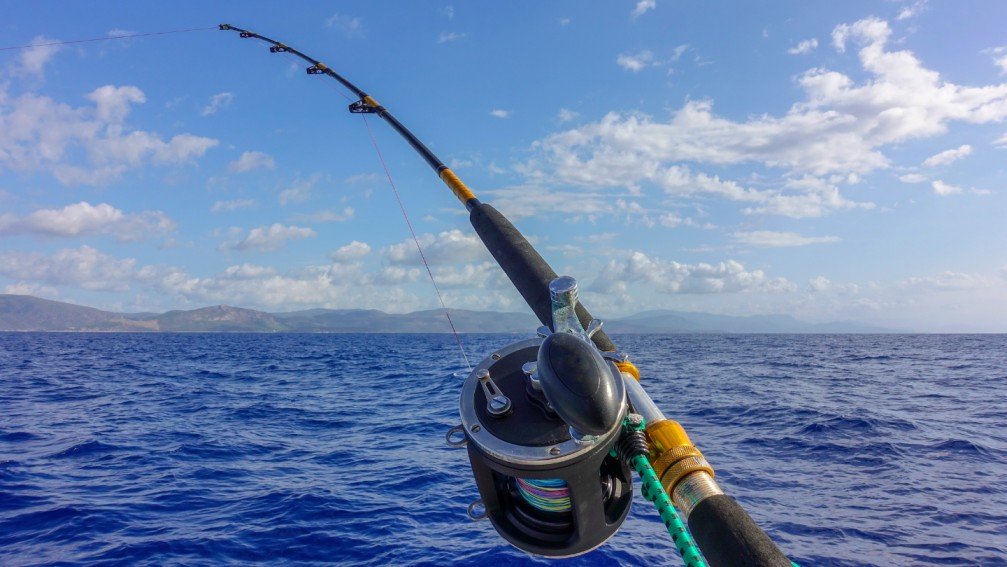To make fish bait, mix flour, cornmeal, water, and cheese. Mold the mixture into small balls and let it harden.
Fishing enthusiasts know the importance of good bait. The right bait can significantly increase your chances of a successful catch. Homemade fish bait is often more effective than store-bought options. Crafting your own bait is also cost-effective and customizable. Using simple ingredients like flour, cornmeal, and cheese, you can create a bait that attracts various types of fish.
This method allows for adjustments based on the fish species you are targeting. Making your own bait also ensures you know exactly what goes into it, avoiding any harmful additives.

Credit: m.youtube.com
Choosing The Right Ingredients
Selecting the right ingredients for fish bait is crucial. The right bait can make all the difference in your fishing success. There are many options available, each with its own benefits. This guide will help you choose the best ingredients for your bait.
Natural Vs. Artificial Bait
Natural bait often includes live or fresh items. These can be worms, minnows, or insects. Fish are naturally attracted to these because they resemble their food. Natural bait can be messy but is often very effective.
Artificial bait is man-made. It includes plastics, spinners, and jigs. These are designed to mimic real food and can be very lifelike. Artificial bait is usually cleaner and easier to store.
| Bait Type | Advantages | Disadvantages |
|---|---|---|
| Natural Bait |
|
|
| Artificial Bait |
|
|
Best Bait For Different Fish Species
Different fish species prefer different types of bait. Knowing which bait to use can help you catch more fish. Here are some examples:
- Trout: Use worms, salmon eggs, or artificial flies.
- Bass: Use minnows, crayfish, or plastic worms.
- Catfish: Use chicken liver, stink bait, or nightcrawlers.
- Crappie: Use small minnows or jigs.
Choosing the right bait can improve your fishing experience. Natural bait works well but can be messy. Artificial bait is clean but may be less effective. Select the best bait for the fish you want to catch.

Credit: www.wikihow.com
Preparing Homemade Fish Bait
Creating your own fish bait can be both fun and rewarding. It gives you control over the ingredients, ensuring a fresh and effective lure. Homemade bait often attracts more fish compared to store-bought options. Dive into these simple and advanced techniques to make your own fish bait.
Simple Recipes
Simple recipes for homemade fish bait are easy to follow. They require minimal ingredients and effort. Here are a few basic recipes to get you started:
- Bread Dough: Mix bread, water, and a bit of sugar. Shape into small balls.
- Cheese Mix: Combine shredded cheese with flour and water. Form into small chunks.
- Peanut Butter Balls: Blend peanut butter, flour, and oats. Roll into small balls.
These simple baits are perfect for beginners and attract a variety of fish.
Advanced Techniques
For seasoned anglers, advanced techniques can enhance your bait. These methods involve more complex ingredients and preparation. Here are some advanced homemade bait recipes:
- Boiled Bait:
- Mix flour, eggs, and a fish-attracting scent.
- Shape into balls and boil until firm.
- Liver Paste:
- Blend chicken liver with garlic powder and oatmeal.
- Form into small patties or balls.
- Fermented Corn:
- Soak corn in water with sugar for several days.
- Use the fermented corn directly on the hook.
These advanced techniques can significantly improve your catch rate. Experiment with different combinations to find what works best for you.
Storing Your Fish Bait
Proper storage of fish bait is essential for a successful fishing trip. Whether you need short-term or long-term solutions, knowing how to store your bait ensures it stays fresh and effective.
Short-term Storage
Short-term storage is key for keeping bait fresh for a few hours or days. Here are some tips:
- Keep bait cool: Use a cooler with ice packs.
- Moisture control: Damp newspaper or paper towels keep bait moist.
- Freshwater for live bait: Change water every few hours.
- Avoid direct sunlight: Store bait in a shaded area.
Long-term Preservation
For long-term preservation, freezing or drying bait can be effective. Here are some methods:
| Method | Steps |
|---|---|
| Freezing |
|
| Drying |
|
Both methods help maintain bait quality for future use. Proper storage techniques ensure you always have fresh bait ready.
Using Live Bait Effectively
Live bait can be a game-changer for fishing. It attracts more fish because it’s natural. Effective use of live bait requires skill and knowledge. Below are key points on handling and keeping live bait alive.
Handling Live Bait
Proper handling of live bait is crucial. Mishandling can kill or injure it, making it less effective.
- Use wet hands or gloves to handle bait. This protects its delicate skin.
- Avoid squeezing the bait. Gentle handling keeps it lively and appealing.
- Hook the bait properly. Different types of bait need different hooking methods. For example, hook worms through the midsection and minnows through the back.
Keeping Bait Alive
Keeping bait alive ensures it remains effective. Dead bait is less attractive to fish.
Here are some tips to keep your bait alive:
- Use an aerated bait bucket. This keeps water oxygen-rich, helping bait breathe.
- Keep the water cool. Warm water can stress or kill bait. Use ice packs to maintain temperature.
- Change the water regularly. Fresh water prevents toxins from building up.
- Avoid overcrowding. Too many baitfish in a small space can lead to stress and death.
Following these steps will help you use live bait effectively. Happy fishing!
Fishing With Artificial Bait
Fishing with artificial bait can be fun and effective. Unlike live bait, artificial lures are reusable. They come in many shapes, sizes, and colors. This makes them versatile for various fishing conditions. Here’s how to get the most out of them.
Choosing The Right Lures
Choosing the right lure is crucial. The lure should mimic the prey fish eat. Different fish species prefer different types of bait. For example:
| Fish Type | Recommended Lure |
|---|---|
| Bass | Soft plastic worms |
| Trout | Spinners and spoons |
| Catfish | Stink baits |
Color matters too. Bright colors work well in murky waters. Natural colors are best in clear waters.
Techniques For Different Waters
Ponds and Lakes:
- Cast near structures like logs and rocks.
- Use slow, steady retrieves.
- Try topwater lures early in the morning or late evening.
Rivers and Streams:
- Cast upstream and let the lure drift downstream.
- Use spinners and crankbaits for active fish.
- Fish near eddies and undercut banks.
Saltwater:
- Use heavier lures to cast further.
- Opt for jigs and spoons for deep-water fishing.
- Try popping plugs near the surface for predatory fish.
Each water type requires different techniques. Adjusting your approach can improve your success. Always be prepared to switch lures and techniques.

Credit: catsportfishing.com
Seasonal Bait Selection
To catch more fish, choose the right bait for each season. Fish behavior changes with the weather. Knowing the best bait for each season helps you catch more fish. Below are some tips for choosing the best bait during summer and winter.
Summer Bait Choices
In summer, fish are more active due to warm water. Use live bait like worms and crickets. These baits attract many fish types.
- Worms: Easy to find and very effective.
- Crickets: Great for bass and bluegill.
- Minnows: Perfect for catching big fish like bass.
Artificial lures also work well in summer. Choose bright colors. Fish see them easily in clear water.
- Spinnerbaits: Attract fish with flash and vibration.
- Crankbaits: Mimic small fish, great for predatory fish.
- Topwater lures: Excite fish with surface action.
How to Choose a Bait For Fishing
Winter Bait Strategies
Winter fishing is different due to cold water. Fish move slower and eat less. Use bait that is easy for fish to catch.
- Jigs: Effective for slow, deliberate movements.
- Spoons: Mimic dying baitfish, great in cold water.
- Soft plastics: Work well when fished slowly.
Live bait is also effective in winter. Use small and slow-moving bait.
- Mealworms: Very attractive to fish in cold water.
- Waxworms: Good for panfish and trout.
- Small minnows: Perfect for ice fishing.
Fish deep areas in winter. Water is warmer and fish are more likely to be there.
| Season | Best Bait | Fish Type |
|---|---|---|
| Summer | Worms, Crickets, Minnows, Spinnerbaits | Bass, Bluegill |
| Winter | Jigs, Spoons, Mealworms | Panfish, Trout |
Tips From Expert Anglers
Creating the perfect fish bait requires both knowledge and experience. Expert anglers have honed their skills over years of practice. Learning from their insights can give you an edge. Here are some tips to help you make effective fish bait.
Common Mistakes To Avoid
Avoiding common mistakes can improve your bait-making skills. Here are some pitfalls to watch out for:
- Using Too Much Scent: Overpowering scents can scare fish away. Use scents sparingly.
- Incorrect Ingredients: Some ingredients don’t attract fish. Research before adding new items.
- Wrong Consistency: Bait that falls apart won’t stay on the hook. Aim for a firm, sticky texture.
Proven Strategies For Success
Utilize these proven strategies to make effective fish bait:
- Research Local Fish: Different fish prefer different baits. Know your target species.
- Use Fresh Ingredients: Fresh ingredients are more attractive to fish.
- Experiment and Adjust: Don’t be afraid to tweak your recipes. Adapt based on what works best.
| Ingredient | Purpose |
|---|---|
| Worms | Attracts a wide variety of fish. |
| Corn | Bright color attracts fish visually. |
| Cheese | Strong scent lures fish. |
Remember to always test your bait in different water conditions. This helps in understanding what works best for your target fish. Happy fishing!
Environmental Considerations
Fishing is a beloved pastime. But, it’s crucial to think about the environment. Using the right bait and following rules helps protect nature. Here are some tips to keep your fishing eco-friendly.
Eco-friendly Bait Options
Using eco-friendly bait is a great start. These baits break down naturally and do not harm water or wildlife. Here are some options to consider:
- Homemade Dough Bait: Made from flour, water, and cornmeal. It’s safe and effective.
- Natural Bait: Worms, insects, and other natural options. They are biodegradable and safe for fish.
- Plant-Based Bait: Corn, peas, and bread are good choices. They are safe and eco-friendly.
Local Regulations And Guidelines
Before fishing, check local rules. They protect fish and the environment. Here’s what to look for:
- Licenses: Make sure you have the right fishing license.
- Bait Restrictions: Some areas ban certain baits. Check local guidelines.
- Fishing Seasons: Only fish during allowed seasons. This helps fish populations stay healthy.
- Catch Limits: Follow limits on the number and size of fish you catch.
Following these steps ensures you fish responsibly. Protecting the environment keeps fishing fun for everyone.
Creating your own fish bait can be a rewarding experience. It’s cost-effective and often more effective than store-bought options. With the right ingredients and techniques, you can attract more fish. Experiment with different recipes to find what works best for you.
Happy fishing!
FAQs:
What Is The Best Homemade Fish Bait?
The best homemade fish bait includes bread dough, cheese, corn, worms, and chicken liver. These attract various fish species effectively.
What Can I Use To Attract Bait To Fish?
Use live bait like worms or minnows, scented artificial lures, or chum to attract fish effectively.
How To Make Fish Bait With Flour And Water?
Mix 1 cup of flour with water to form a dough. Shape into small balls. Let dry. Your fish bait is ready.
What Food Attracts Fish?
Fish are attracted to live bait like worms, minnows, and insects. They also like corn, bread, and cheese. Using scented lures or chum can enhance attraction.



